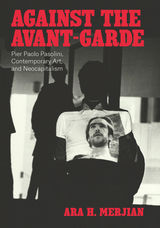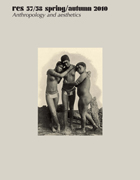3 books about Merjian, Ara H.

Against the Avant-Garde
Pier Paolo Pasolini, Contemporary Art, and Neocapitalism
Ara H. Merjian
University of Chicago Press, 2020
Recognized in America chiefly for his films, Pier Paolo Pasolini (1922–1975) in fact reinvented interdisciplinarity in postwar Europe. Pasolini self-confessedly approached the cinematic image through painting, and the numerous allusions to early modern frescoes and altarpieces in his films have been extensively documented. Far less understood, however, is Pasolini’s fraught relationship to the aesthetic experiments of his own age. In Against the Avant-Garde, Ara H. Merjian demonstrates how Pasolini’s campaign against neocapitalist culture fueled his hostility to the avant-garde. An atheist indebted to Catholic ritual; a revolutionary communist inimical to the creed of 1968; a homosexual hostile to the project of gay liberation: Pasolini refused the politics of identity in favor of a scandalously paradoxical practice, one vital to any understanding of his legacy. Against the Avant-Garde examines these paradoxes through case studies from the 1960s and 1970s, concluding with a reflection on Pasolini’s far-reaching influence on post-1970s art. Merjian not only reconsiders the multifaceted work of Italy’s most prominent postwar intellectual, but also the fraught politics of a European neo-avant-garde grappling with a new capitalist hegemony.
[more]

Aram's Notebook
Maria Àngels Anglada
Swan Isle Press, 2024
A mother and son’s fictional journey to escape the Armenian Genocide and start anew.
Like any other fifteen-year-old boy, Aram might never have written the events of his still young life, except that he found himself suddenly plunged into exile, fleeing certain death. In 1915, the Ottoman authorities undertook the wholesale extermination of the Armenian people; hundreds of thousands of men, women, and children like Aram suffered one of the twentieth century’s most savage persecutions. Inspired by the plight of the murdered modernist poet Daniel Varoujan (1884–1915), this novel follows Aram and his widowed mother on their flight toward a new life on—and under—the sea. From recollections of his father’s meditations on Homer to a life-changing apprenticeship as a coral fisherman off the coasts of Cataluña and Marseille, Aram’s tale dives into a future that might help redeem a harrowing past. Aram's Notebook examines the Armenian Genocide through a narrative in which poets and poetry loom large. Aram’s tale evokes a struggle not simply for physical survival, but for saving memory from the clutches of destruction. Evocatively translated from the original Catalan by Ara Merjian.
Like any other fifteen-year-old boy, Aram might never have written the events of his still young life, except that he found himself suddenly plunged into exile, fleeing certain death. In 1915, the Ottoman authorities undertook the wholesale extermination of the Armenian people; hundreds of thousands of men, women, and children like Aram suffered one of the twentieth century’s most savage persecutions. Inspired by the plight of the murdered modernist poet Daniel Varoujan (1884–1915), this novel follows Aram and his widowed mother on their flight toward a new life on—and under—the sea. From recollections of his father’s meditations on Homer to a life-changing apprenticeship as a coral fisherman off the coasts of Cataluña and Marseille, Aram’s tale dives into a future that might help redeem a harrowing past. Aram's Notebook examines the Armenian Genocide through a narrative in which poets and poetry loom large. Aram’s tale evokes a struggle not simply for physical survival, but for saving memory from the clutches of destruction. Evocatively translated from the original Catalan by Ara Merjian.
[more]

Res
Anthropology and Aesthetics, 57/58: Spring/Autumn 2010
Francesco Pellizzi
Harvard University Press, 2010
This double volume of the renowned international journal of anthropology and comparative aesthetics includes “Aesthetics’ non-recyclable ground” by Félix Duque; “Seeing through dead eyes” by Jonathan Hay; “The hidden aesthetic of red in the painted tombs of Oaxaca” by Diana Magaloni; “A consideration of the quatrefoil motif in Preclassic Mesoamerica” by Julia Guernsey; “Hunters, Sufis, soldiers, and minstrels” by Cynthia Becker; “Figures fidjiennes” by Marc Rochette; “A sacred landscape” by Rachel Kousser; “Military architecture as a political tool in the Renaissance” by Francesco Benelli; “The icon as performer and as performative utterance” by Marie Gasper-Hulvat; “Image and site” by Jas’ Elsner; “Untimely objects” by Ara H. Merjian; “Max Ernst in Arizona” by Samantha Kavky; “Form as revolt” by Sebastian Zeidler; “Embodiments and art beliefs” by Filippo Fimiani; “The theft of the goddess Amba Mata” by Deborah Stein; and contributions to “Lectures, Documents and Discussions” by Gottfried Semper, Spyros Papapetros, Erwin Panofsky, Megan R. Luke, Francesco Paolo Adorno, and Remo Guidieri.
[more]
READERS
Browse our collection.
PUBLISHERS
See BiblioVault's publisher services.
STUDENT SERVICES
Files for college accessibility offices.
UChicago Accessibility Resources
home | accessibility | search | about | contact us
BiblioVault ® 2001 - 2024
The University of Chicago Press









